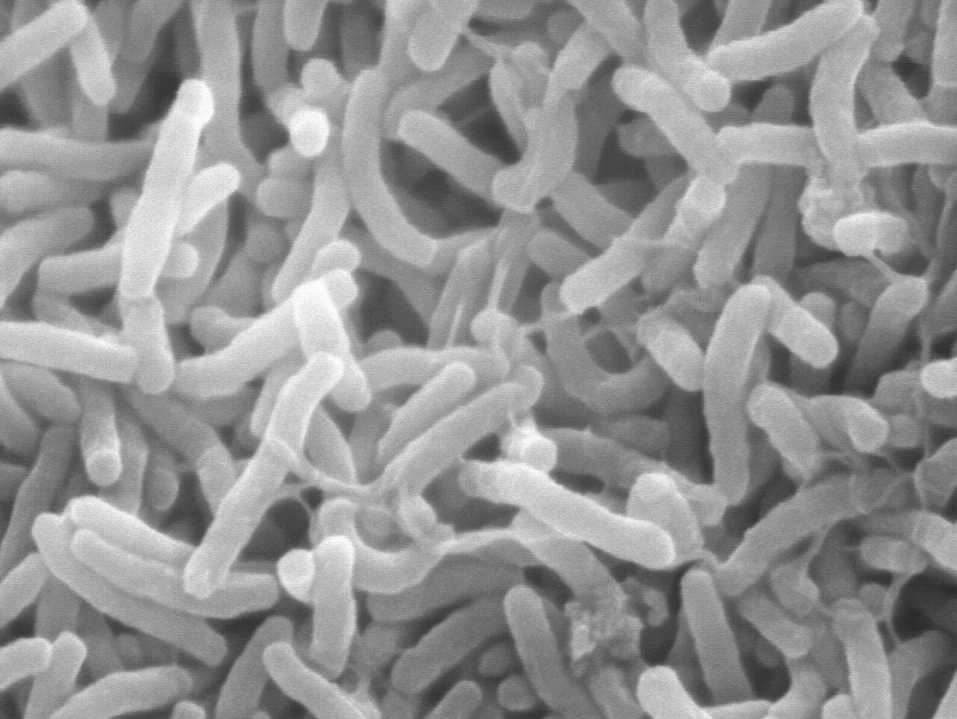Vibrio cholerae bacteria (pictured) cause the disease cholera, which is an infection of the intestine. The disease can lead to severe diarrhea and dehydration, which can be fatal. Cholera can be spread by unsafe water or food and causes tens of thousands of deaths a year. There are cholera vaccines, but they do not offer good long-term protection for young children, in particular.
Peng Xu, National Institutes of Health, Bethesda, MD, USA, Edward T. Ryan, Massachusetts General Hospital, Harvard Medical School, and Harvard T. H. Chan School of Public Health, Boston, MA, USA, Xuefei Huang, Michigan State University, East Lansing, USA, and colleagues have developed a candidate for an improved cholera vaccine. The team prepared a conjugate vaccine by binding multiple copies of an antigen to the surface of virus-like particles derived from bacteriophage Qβ. This bacteriophage usually infects bacteria. The antigen is an O-specific polysaccharide (OSP) antigen from the surface of a particular strain of V. cholerae. The team used 3,4-dimethoxy-3-cyclobutene-1,2-dione (dimethyl squarate) as a linker to connect the antigens to the virus-like particle.
The modified virus-like particles were recognized by antibodies in blood taken from recovering cholera patients, but not from control patients with another bacterial disease. The team then immunized mice with the conjugate vaccine. They found that three doses caused a strong antibody response that persisted for over eight months days after the first dose. According to the researchers, the virus-like particle could mimic natural bacteria by presenting multiple copies of OSP on its surface, and it might warrant further study as a next-generation cholera vaccine.
- Virus-like Particle Display of Vibrio cholerae O-Specific Polysaccharide as a Potential Vaccine against Cholera,
Zahra Rashidijahanabad, Meagan Kelly, Mohammad Kamruzzaman, Firdausi Qadri, Taufiqur R. Bhuiyan, Hunter McFall-Boegeman, Di Wu, Grzegorz Piszczek, Peng Xu, Edward T. Ryan, Xuefei Huang,
ACS Infect. Dis. 2022.
https://doi.org/10.1021/acsinfecdis.1c00585


